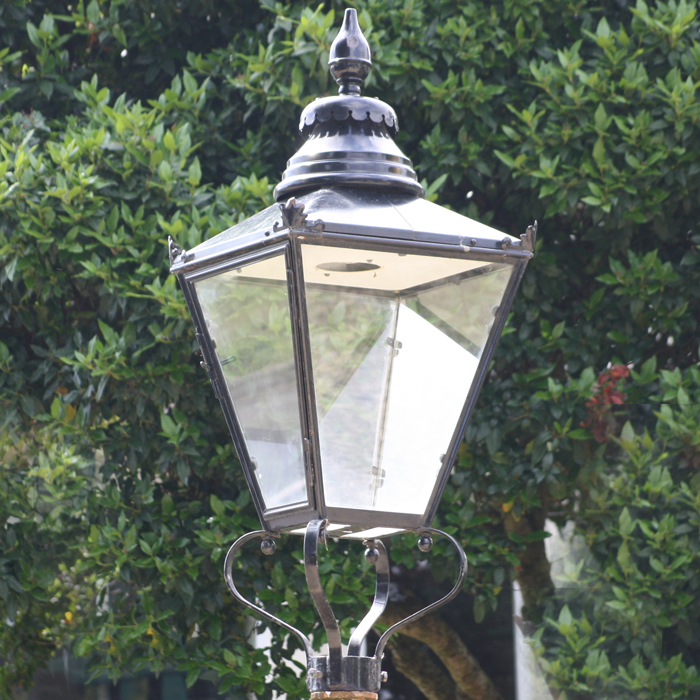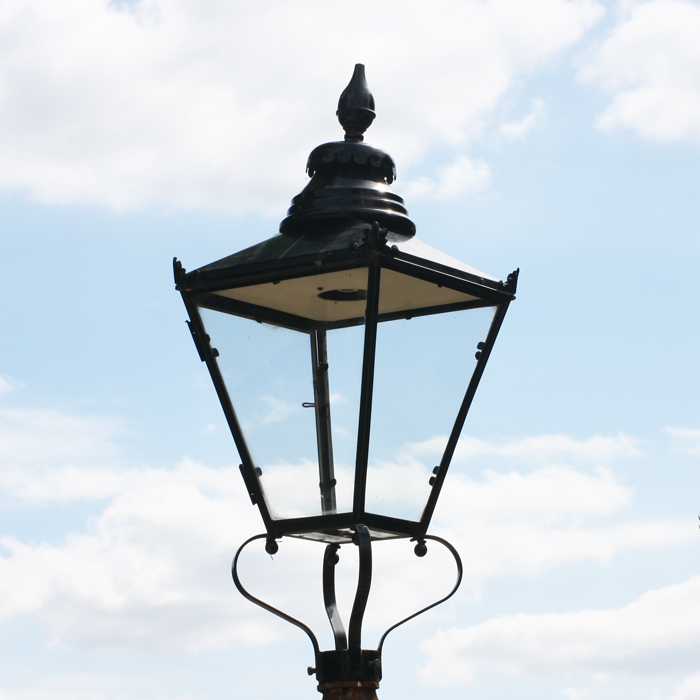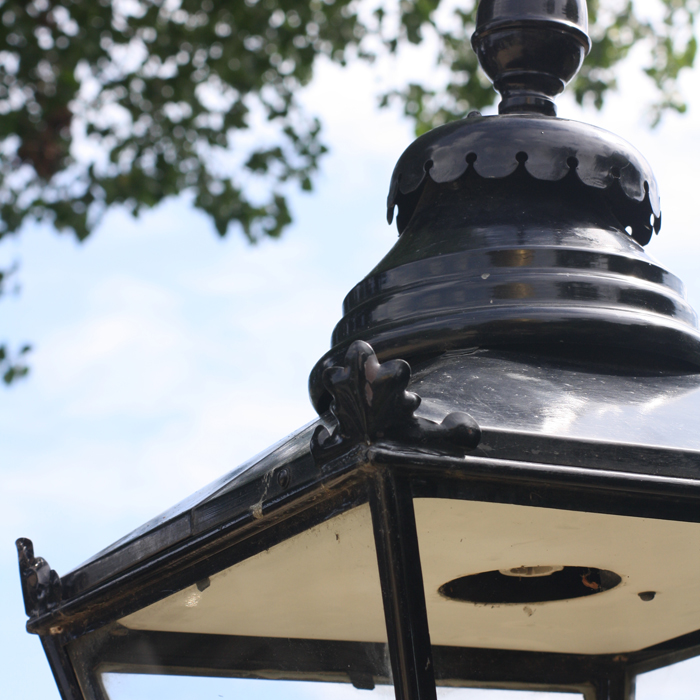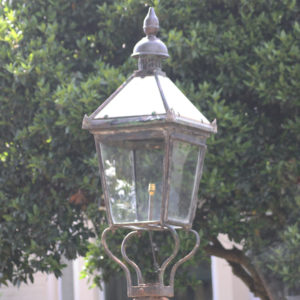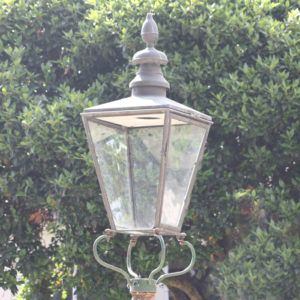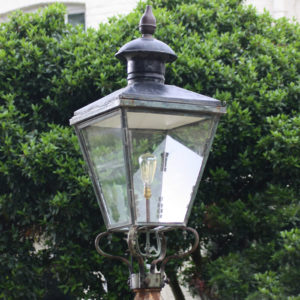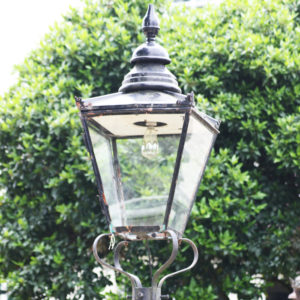Click and Collect – Please contact us to arrange collection or delivery of this item
An English copper Winsor street lantern,
the square section tapered body with pointed spinnings atop the tented roof, all raised on a four-pronged chair-iron, the electric lamp-holder wired from the base,
£945
In stock
The first display of gas street lighting in London, in the world, involved a publicity stunt by an eccentric German: Frederick Winsor (an anglophile, born Winzer, he had changed his name on moving to London). In 1807 to mark the birthday of Prince George, soon to be Regent, Winsor lit up part of the north side of Pall Mall using his own design of gas lanterns. The Prince, as a result, was later to give his patronage to gas and Winsor went on to form the Gas Light and Coke Company. The light from the gas lamps was far superior to that of its humble predecessor the oil lamp and that night in St. James it caused delight to those that flocked to see it.
The Monthly Magazine commented that,
"...from the success of this considerable experiment, hopes may now be entertained that this long talked of mode of lighting our streets may at length be realised. The Mall continued crowded with spectators untilnearly 12 o'clock and they seemed much amused and delighted by this novel exhibition."
The Gas Light & Coke Co. followed, and became a huge success, but Winsor was later pushed out. He was to die in obscurity in Paris in 1830. His gravestone reads: "At evening time it shall be light", Zach XIV, 7".

